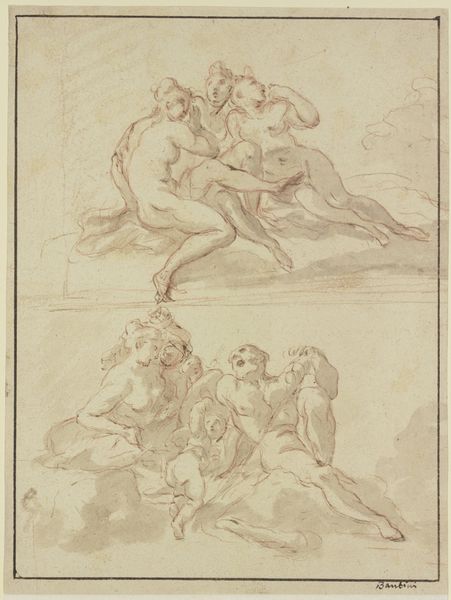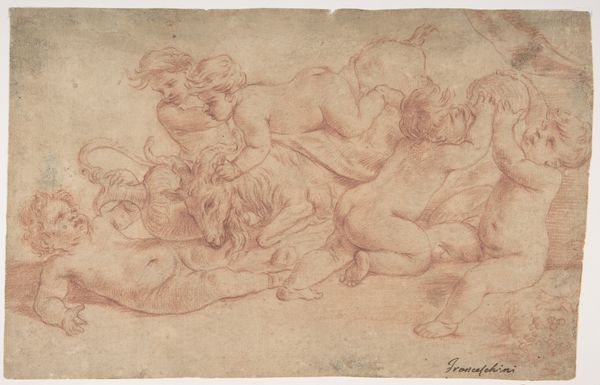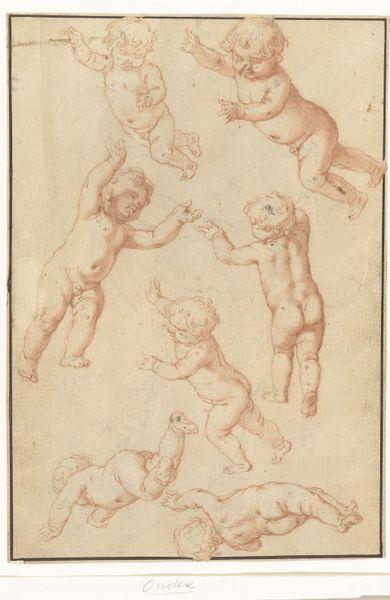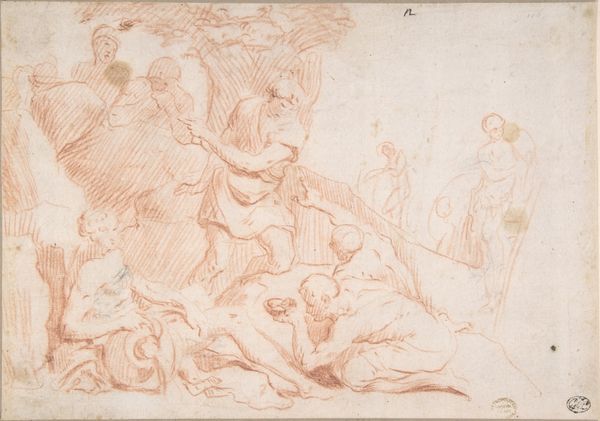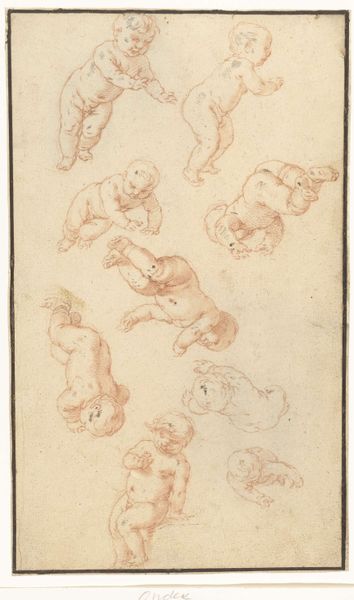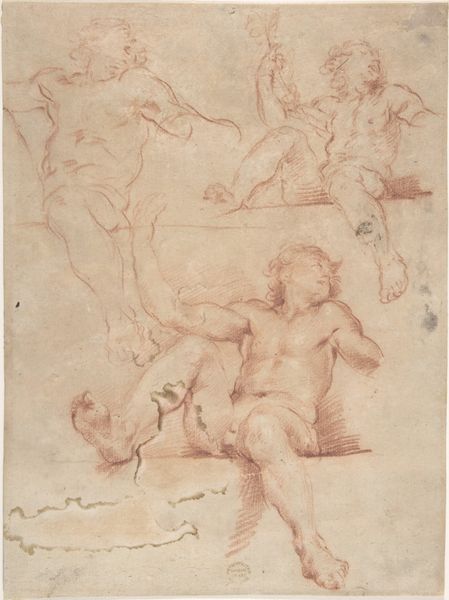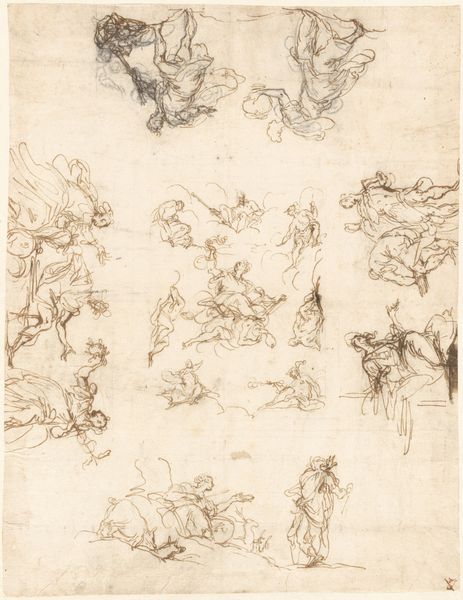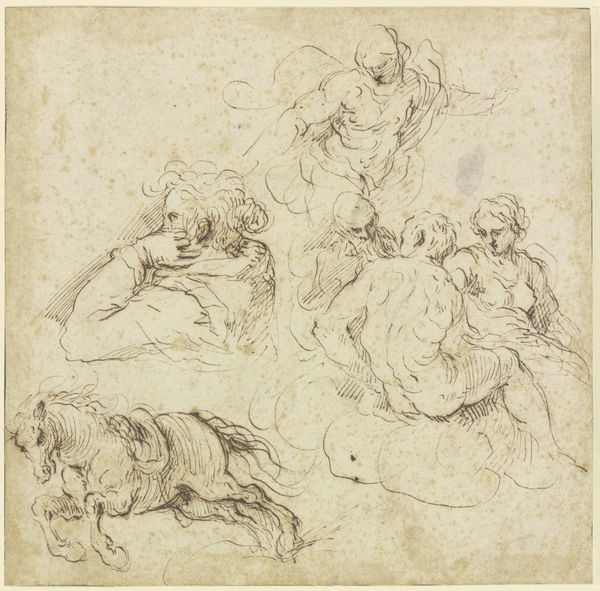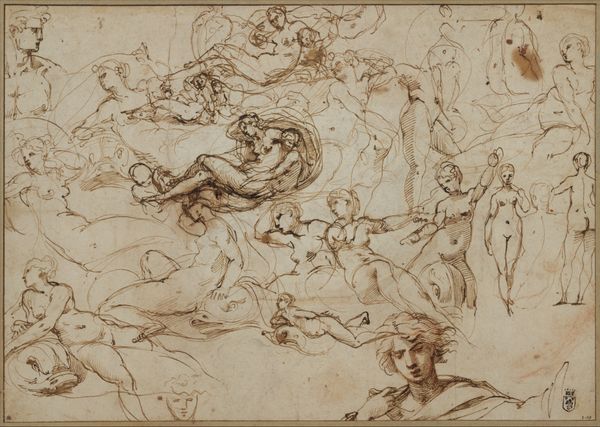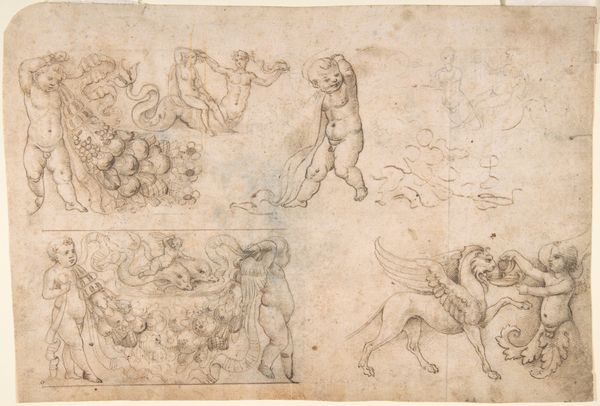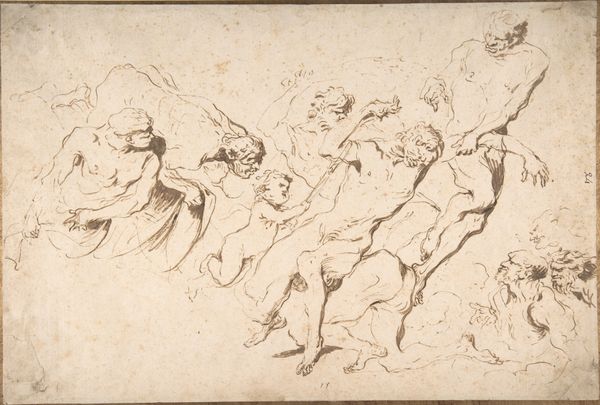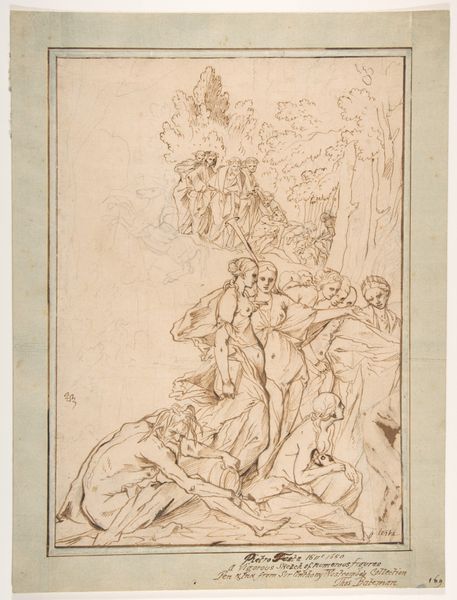
drawing, paper, ink, pencil
#
portrait
#
drawing
#
toned paper
#
light pencil work
#
baroque
#
pen sketch
#
pencil sketch
#
figuration
#
paper
#
personal sketchbook
#
ink
#
ink drawing experimentation
#
pen-ink sketch
#
pencil
#
sketchbook drawing
#
watercolour illustration
#
academic-art
#
sketchbook art
#
miniature
Dimensions: height 328 mm, width 216 mm
Copyright: Rijks Museum: Open Domain
Curator: I find myself immediately drawn to the flurry of chubby limbs and gossamer wings – it feels so lively! What strikes you about this drawing, Editor? Editor: There's a delicate sweetness, even a playful exuberance, to this work despite it just being a study. It is intriguing how this sheet, entitled "Studies van putti," which means "studies of cherubs" or "putti" in Dutch, hails from sometime between 1700 and 1800 and resides here at the Rijksmuseum. Curator: Absolutely, and putti became particularly en vogue, if I may, during the Baroque period. As symbols, cherubs were far more than chubby babies. They often represented divine love, messengers, and were tied to secular power through representations of royal succession or allegorical virtues during the early modern period. Editor: And in this image, there are several stages represented, right? With pen and ink and pencil on paper we get glimpses into the artist's thinking and the stages in producing these allegorical symbols. Do you think this served more of a personal or pedagogical function? Was this produced for their own exploration, or as demonstration material for a workshop? Curator: Given the medium – the sketchbook-like nature – I lean towards personal exploration. Think of the art academies that formed during this period and their influence! Such preparatory studies would have been crucial. Mastering the idealized human form, even in miniature like these putti, was considered the groundwork to more important pieces with social, political and religious themes. This work, as a product of these changing views, exists as an artifact. Editor: Right, it reveals both personal experimentation, and hints towards a deeper history regarding the standardization of artistic training that swept Europe during the period. What do you find particularly impactful? Is it the use of line? Curator: The artist captures weightlessness. I feel how their bodies seem suspended in mid-air, floating as if on divine currents, almost completely defying gravity. It speaks to both skill and an artistic aspiration of the age. Editor: It is wonderful how simple ink and paper manages to suggest something that has weight. Seeing the multitude of faces together it suggests the abundance and ubiquity of those religious cherubs and angels within our cultures, despite the decline of traditional dogma and the arrival of science, as we know it. Curator: Precisely. It serves as a testament to art's enduring influence in shaping and reflecting society's values. I leave this interaction all the richer!
Comments
No comments
Be the first to comment and join the conversation on the ultimate creative platform.
